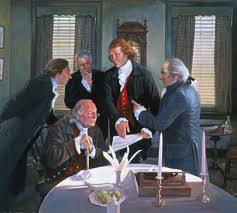 The month of October is brutal for me this year. On top of working with my existing client base, I am attending three different conferences in three different regions to help another client with implementation of a specific training track aimed at executive directors and school superintendents. As I attend these conferences, I see non-profit professionals hopping from session-to-session and find myself wondering, “What is their conference strategy?”
The month of October is brutal for me this year. On top of working with my existing client base, I am attending three different conferences in three different regions to help another client with implementation of a specific training track aimed at executive directors and school superintendents. As I attend these conferences, I see non-profit professionals hopping from session-to-session and find myself wondering, “What is their conference strategy?”
When I was an executive director, I loved attending conferences and trainings. It felt like I was nurturing the inner non-profit professional inside of me. However, after a few years on the job, I found an entire bookshelf in my office full of conference materials and notes. I wasn’t using them. I wasn’t referencing back to them. They were just gathering dust.
The analogy I use to describe this useless activity involves the popular “Abs of Steel” workout DVD, and it goes something like this:
For those of you who know me, you know that I do not possess abs of steel. In fact, I don’t possess anything of steel anywhere on my body. So, if I went to the mall and purchased an Abs of Steel workout DVD, some people might consider that a step in the right direction. This is akin to you deciding to attend a conference or training session.
However, if I came home with my new Abs of Steel workout DVD, popped a tub of buttery popcorn, and watched the DVD while sitting on the couch and eating that popcorn, I would be no closer to my goal of obtaining abs of steel. This is akin to you attending a conference, coming home with a bunch of notes and materials, and putting them on your shelf to collect dust.
The reality of the situation is that you need to do the exercises on the workout DVD in order to achieve the desired result. Of course, the same is true with what you learn at the conference. When you get home, you need to turn your new-found knowledge into action. The act of doing what you learned will build your organizational muscles and grow your organizational capacity.
So, what is your conference abs of steel strategy? Do you have one?
 After a few years of proverbially eating popcorn on the couch after attending conferences and trainings, I decided to do something different. My strategy was simple. Rather than taking notes on what the trainer was saying, I only wrote down action items that came to mind while listening to the speaker.
After a few years of proverbially eating popcorn on the couch after attending conferences and trainings, I decided to do something different. My strategy was simple. Rather than taking notes on what the trainer was saying, I only wrote down action items that came to mind while listening to the speaker.
These were things I planned to transfer to my To Do List when I got home.
I decided that I didn’t need to write down what the trainer was saying because they were most likely handing out copies of their PowerPoint presentation along with a dump truck of materials. Besides, those notes were no good to me if they were just going to sit on my book shelf and collect dust. Right?
I’ll admit that this strategy didn’t always work perfectly. Oftentimes, I’d get home from a conference and my desk was piled high and my To Do List was long. Nevertheless, I found this strategy to be better than the previous one and so I kept it.
I personally liked the “action-focus” of what I was trying to accomplish.
As I facilitate my sessions and sit in my exhibitor booth during the month of October, I can’t help but wonder what are other people’s conference strategies. Are you popping popcorn or are you doing something else? Are you building your organizational muscles or are you just making yourself feel better because you now own the transformational resource?
Please scroll down to the comment box below and share your conference and training strategies. We can all learn from each other.
Here’s to your health!
Erik Anderson
Founder & President, The Healthy Non-Profit LLC
www.thehealthynonprofit.com
erik@thehealthynonprofit.com
http://twitter.com/#!/eanderson847
http://www.facebook.com/eanderson847
http://www.linkedin.com/in/erikanderson847






